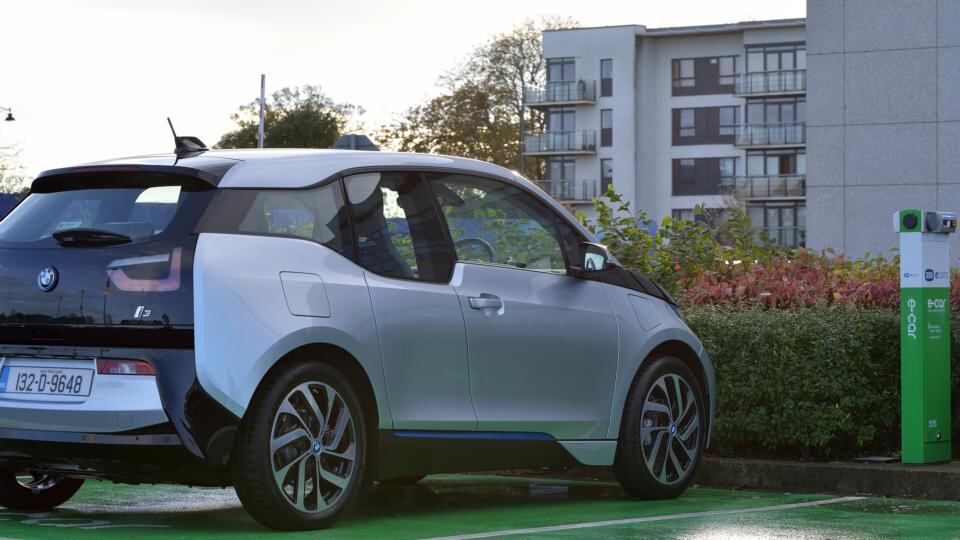Apple is reportedly at a crossroads with the next iPhone and proposed iWatch. The tech giant’s dreams are being tethered to reality by battery limitations.
Over in the motoring world, where engineers are merging smartphone apps into dashboards, a similar dilemma exists under the bonnet.
Replacing the combustion engine is proving far more cumbersome than first thought. Mainstream manufacturers are coming on-stream with electric alternatives, but most are hobbled with limited range and punitive pricing.
0 of 3
Electric cars represent a definite future in motoring, but the early incarnations on our roads are not the finished article. Any car that manages just 100km before you have to park it up for a few hours to recharge it is little more than a very expensive gadget.
While there are promises of batteries with ranges of 400km-plus in the next generation of electric cars, the motoring world needs a quick fix to make them viable today. Hence the addition of a range-extender, a little motor that works exactly like a generator to recharge the battery when it runs out. Range extenders are the missing link between electric cars and real-life motoring for most potential buyers.
And so we come to the BMW i3. It's a premium hatchback available as an electric-only car, but for a further €4,530 you can add a two-cylinder petrol engine fitted as a generator to extend the range between charges or refuels to about 300km. Admittedly, it's an optimistic estimate of range, but the principle is admirable.
My first few days in the i3 were electric. The thrill for car fans is the incredible torque and acceleration, all in eerie silence. With the i3 the take-off never fails to wow. An official 0-100km/h time of 7.9 seconds doesn’t do justice to the way it throws you back into your seat the moment you floor the throttle. It’s addictive, but it quickly drains the battery.
Sudden racket
Having pottered around town (admittedly accelerating away from the lights at every opportunity) and clocked up nearly 70km, the battery finally ran out of power. On the way home there was a sudden racket from behind the car. It sounded like we were being pursued by an angry sewing machine. Had I ran over a pizza delivery guy on his scooter? A quick inspection revealed the source of the "put-put" noise. It was in fact the little generator. For all the quality features in the i3, BMW really could have done more to mute the racket.
Using fast-charging points, BMW claims you can recharge from flat to 80 per cent within three hours. This is through a 32-amp port. The problem is that most households in Ireland can't handle that level of charge. When we plugged in the i3 to our fast charger fitted to the house it told us the mains power was too low or tripped the fuse. You can change the setting in the car to 16-amp but this means the recharging time is longer. Alternatively there is also a charging cable that can be plugged into a regular household socket, but charging here takes between eight and 10 hours.
The other issue we had with the car was its algorithm for working out expected range, which was repeatedly at odds with reality. It’s probably due to my erratic driving style, but I never knew how much I really had left between charges or refuelling. With a range of 500km, that’s rarely a problem in regular cars. But when you’re teetering around 40km or so then it starts to become important. At one stage, with the battery depleted and the little generator working away, we were told the range was 46km. Therefore a motorway trip of 32km seemed within reach. However, even with steady driving, it fell six km short. Thankfully there was a filling station within reach as the dashboard estimated a range of 1km.
The little petrol tank took just €13.50 to fill and the car promised 115km, which suggests over 50mpg. If you were to miss a charge, then this is still an impressive consumption figure, particularly given that the i3 retains its punchy acceleration whether the battery is charged from plug or its petrol generator.
Carbon fibre bodyframe
For all the marketing pitch about the i3's electric powertrain, the real innovation is in its carbon fibre bodyframe. This is similar to the protective shell in which Formula One drivers sit and survive otherwise fatal crashes. Along with being incredibly strong, it's also incredibly light, thereby saving on fuel consumption. The problem has been that it has also been too expensive to create for mass-production cars. Until now, it seems. BMW has created a weaving process for the fibres, with the help of a US firm, that is likely to revolutionise car manufacturing.
It also means a lightweight body, which helps its handling. The fact that the heaviest parts – such as the 240kg battery - are built into the floorpan means a remarkably low centre of gravity for a family hatchback and, as a result, some fantastic handling characteristics. The i3 corners like a sports car, limited only by the tyres struggling to get a strong grip on the wet roads.
While it looks small from outside, the i3 is surprisingly spacious inside and with reverse opening rear doors, access to the back is easy. A family of four could easily live with this car.
There is a general cynicism in Ireland about small electric cars. The i3 combats this with a combination of wow factors. Take the ConnectedDrive system that lets you surf the web and even reads out the online news stories as you drive. Then there’s the impressive acceleration from the electric powertrain. And the real revolution, that lightweight carbon fibre bodyframe.
But then there’s the price. I’m no salesman, but even the sharpest forecourt shark will struggle to sweeten this particular pill. “Yours for €41,040, or €48,530 with the added extras on this test car.”
Financing options
There are financing options: BMW is offering the i3 with range extender on a personal contract hire plan from €495 a month over 36 months, with a deposit of €5,999. But that's still more than you would pay for a sizeable premium family saloon under similar schemes.
Electric-only models are for those who live exceptionally ordered lives. Range extenders make electric cars a realistic option for the rest of us. On paper it doesn’t seem too arduous a task to charge your car overnight. In reality, our lives are not that ordered. How many times have you let your phone run out of power, for instance? On a stormy night last week, I simply couldn’t muster up the motivation to fiddle around with plugs and cables. That’s where the range extender in this i3 proves its worth.
This car ticks a lot of boxes. However, much as I loved the innovation on display, I can’t look beyond the price. The i3 is something of a curate’s egg: a wonderful showcase of motoring innovation, but limited in its appeal given the cost.
Powertrain/Engine: 647cc engine putting out 34bhp @ 4,300rpm and 55Nm of torque that works as a generator
Price: On the road for €41,040 (this after €2,500 VRT rebate and €5,000 in SEAI grant)
Our verdict: A truly innovative offering but limited in its appeal by price



















